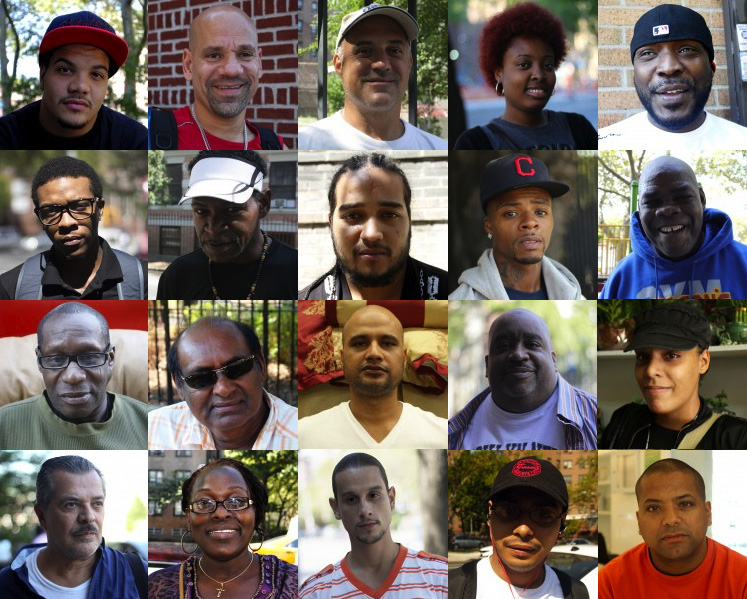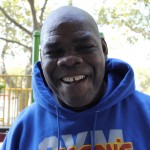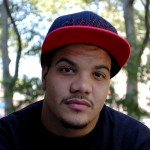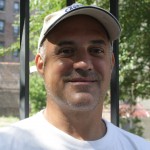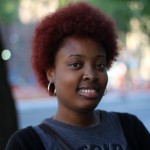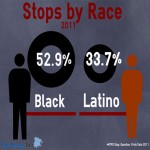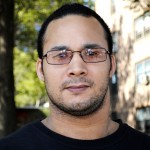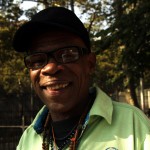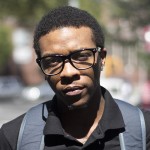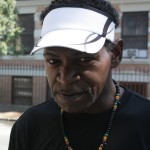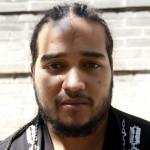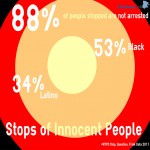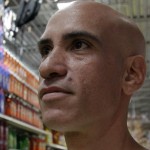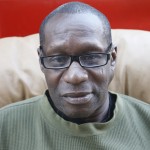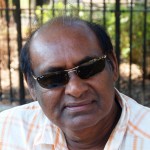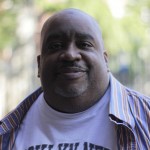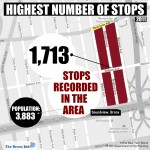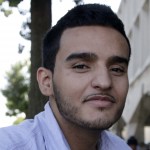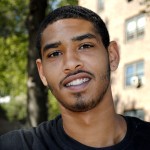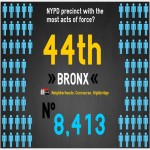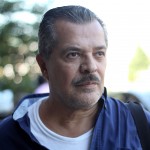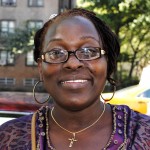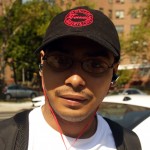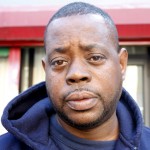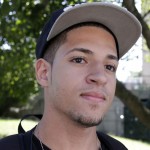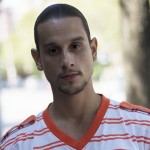
Students and Bronx advocacy groups are now trying to work with School Safety Officers to improve relations and bring peace with dignity to the schools. (JUANITA CEBALLOS/The Bronx Ink)
Grover Vazquez, an 11-year-old former student at P.S. 55 in the Bronx, was terrified when he saw one of his friends get arrested in the middle of class. A police officer assigned to the school was called in when Grover´s classmates started fighting over a pencil. As the officer handcuffed one of the students, Grover hid under his desk because he thought the officer was going to take him too.
When he got home that day in March 2011, he asked his mother, Esperanza Vazquez, why police officers arrest kids who misbehave. “He is a little boy,” Grover told his mother. “He is my friend. We´re not criminals.” It took Vazquez weeks to convince her son that school was a safe place.
The arrests at P.S. 55 were just a few of the hundreds that take place every year in classrooms across the city. In the first half of 2012, the New York City Police Department’s School Safety Division arrested 540 New York City students; 164 of those arrests took place in the Bronx. Although the borough represents only 21 percent of the city’s school enrollment, 30 percent of the total arrests and 51 percent of the total summons were issued there.

Esperanza Vazquez’s son was terrified when he saw one of his friends get arrested in the middle of class. (JUANITA CEBALLOS/The Bronx Ink)
“My son was really traumatized,” said Vazquez, a Mexican immigrant. “There has to be a positive approach to disciplining kids. The excessive use of force is never a solution.”
Before 1998, the Department of Education supervised safety officers in schools. But that year, then Mayor Rudolph Giuliani transferred control of the school division to the police department over protests from students, parents, educators and community leaders who claimed that police in schools would disrupt learning.
In January 2004, Mayor Michael Bloomberg announced the Impact Schools initiative, which allowed the presence of New York Police Department to be increased in schools where there was a high level of reported crime.
In the years since then, the responsibilities of school safety agents have increased. They now monitor entrances, exits and hallways, operate scanners, cameras and metal detectors and verify students and staff identifications.
New York Police Department School Safety Division data reveals that school arrests disproportionately affect black and Latino students in the Bronx. Of those arrested, more than 47 percent were Latinos and 52 percent were black. As reported by the Dignity in Schools Campaign-New York — a coalition of students, parents, advocates, educators and lawyers — 82 percent of students citywide that have to go through metal detectors are black or Latino. But the city’s Department of Education demographic enrollment data shows that Hispanic and black students account for only 68 percent of the city’s school population.
The School Safety Division did not respond to a request for comment despite repeated attempts.
Aiesha Vegas, an 18-year-old Hispanic student at Satellite Academy in the Bronx, feels that Latinos have to constantly “watch their backs.” “They look at us as criminals,” she said. “We are targeted because they categorize us. When you arrest young students, all you do is harm them. Once you’re in the system, it´s going to be really hard to get a job.”
Although there is only a difference of 5 percent in the Hispanic population of the Bronx and Queens, the number of arrests in the Bronx is almost triple those in Queens. While 78 were registered in the Bronx, 27 took place in Queens.
For Shoshi Chowdhury, the Dignity in Schools Campaign-New York coordinator, the numbers reflect an alarming racial disparity. “It definitely creates a state of fear within the immigrant students because any minimal behavior can become a deportable offense,” said Chowdhury.
The immigration consequences of the arrests and summons for Latino students depend on their present immigration status, race, class and origin. The impact can range from expulsion from the United States to the re-evaluation of the present immigration status.
As reported by the New York Civil Liberties Union, there are 5,100 school safety agents in the city’s schools and just 3,000 guidance counselors and 1,500 social workers. According to that organization, “police personnel is becoming involved in disciplinary infractions that should be handled by educators.”

The New York Civil Liberties Union claims that the over-policing of schools drives youth directly into the juvenile and criminal justice systems. (JUANITA CEBALLOS/The Bronx Ink)
The civil liberties union argues that the students are being pushed towards the criminal justice system through zero tolerance policies where minor incidents lead to arrests, juvenile detention referrals, and criminal charges.
School safety agents receive 14 weeks of training, compared to the six months mandatory training for police officers. The civil liberties union says that the agents don’t receive proper and meaningful guidance on what their role in schools should be.
Rosalía Sierra, a parent leader with the New Settlement Parent Action Committee in the South Bronx, said disciplinary responses should start with the school´s teachers and principals. “We want them to reach their goals,” said Sierra, a Mexican immigrant. “We don’t want someone to tie up their hands so that they end up in jail.”
Since 2002, the city´s budget allotted to police and security officers has increased by 65 percent to more than $21 million, according to the Dignity in Schools Campaign-New York. Schools with metal detectors spend at least $2,000 less per student each year than those without. Research conducted by the civil liberties union found that each day, 100,000 New York City schoolchildren must pass through permanent metal detectors to enter their schools.
Muhammad Creasy, an 18-year-old student at Ellis Preparatory on the Kennedy High School Campus in the Marble Hill section of the Bronx, received a ticket when the scanner revealed he had a bottle of water in his backpack. Students are told to remove food and beverages from their backpacks before they pass them through the scanners. “They should invest the money they are paying to the school safety division to buy more books,” said Creasy. “We don´t need police officers in our schools.”
“Agents are in every corner watching you,” said Creasy. “I cannot feel 100 percent comfortable, even in the classroom.”
Estefan Peña is a 19-year-old Dominican student at Ellis Preparatory on the Kennedy High School Campus. School safety agents suspended him three times last year. One of the suspensions was for ordering take-out food.
Shoshi Chowdhury, the Dignity in Schools coordinator, said there isn’t a specific set of rules that defines if that type of conduct is punishable or not. “It depends on the mood of the safety officers,” said Chowdhury.
“There are two scanners in my school,” added Peña. “Whenever I have to go through them I don’t feel like I’m entering a school. It looks like they´re preparing us for a future in prison.”
Students, community leaders and civil rights advocates claim that there is a criminalization of non-criminal incidents. Disorderly conduct charges accounted for 70 percent of the 487 summonses issued in the Bronx schools during the first six months of 2012.
Although Abdul Salam Bukanola, 16, student at Bronx Regional High School, hasn´t been arrested or suspended, he feels that the agents are punishing students for minor disciplinary infractions.
“Friends of mine have been suspended for coming late to school or for talking in class,” said Bukanola. “This policy it´s not right. Sometimes they treat us like criminals. I don’t deserve it because I haven´t done anything bad.”

Since 2002, the city´s budget allotted to police and security officers has increased by 65 percent to more than $21 million. (JUANITA CEBALLOS/The Bronx Ink)
When asked about the policy, Jaime Koppel, Children’s Defense Fund senior program associate, went a step forward and put the focus on how the police presence is affecting the learning environment. “We’re losing an opportunity to teach children,” said Koppel. “They just have to pay a fine and nobody talks to them about what they did wrong.”
According to Akilah Irvin, youth organizer at Mothers on the Move, the school system is failing to provide emotional support to students. “School principals have limited resources at their disposal to address the children’s needs,” said Irvin. “It’s all about the way we communicate with them and the wrong assumptions that are usually made by agents.”
Shoshi Chowdhury is confident that the consequences go far beyond the psychological damages. “This policy is affecting families, in particular low-income neighborhoods. Many students cannot pay the fines associated with summons,” said Chowdhury. “That has a negative impact on their credit rating and can be held against them when trying to get a student loan.”
Advocacy leaders claim that the policy doesn’t leave much space for educators to question agents’ actions. The arrest of Bronx Guild High School Principal Michael Soguero back in 2005 is an example. He was arrested when he tried to stop an officer from handcuffing one of his students and had to spend the night in jail. He was not allowed back in the school until the charges were dropped two months later.
The Student Safety Act, which was signed into law on January 2011, mandates detailed quarterly reports of suspensions, arrests and school-discipline matters. The reports allow civil rights advocates to track School Safety Division practices and allows them to draw a portrait of their disciplinary actions.
On June 25, Bronx parents, elected representatives, School Safety Division top officials and New York State Department of Education members, gathered for the first time to discuss the high number of suspensions and arrests in the borough. During this meeting, parents and students claimed that the School Safety Division is creating a criminal environment without a reduction in arrests or violent incidents.
According to Dinu Ahmed, a community organizer working on educational justice in the South Bronx at Parent Action Committee, the hearing concluded with a commitment from the Department of Education and the police department to come up with an action plan based on the concerns and recommendations raised during the meeting.
Parent Action Committee’s suggested alternatives to school policing, range from restorative practices to peer mediation programs.
“We need to provide support to the students and teach them about conflict resolution,” said Ahmed. “The city has to prioritize support for students over policing and metal detectors and not vice versa.”
School Safety Division. from Juanita Ceballos on Vimeo.







